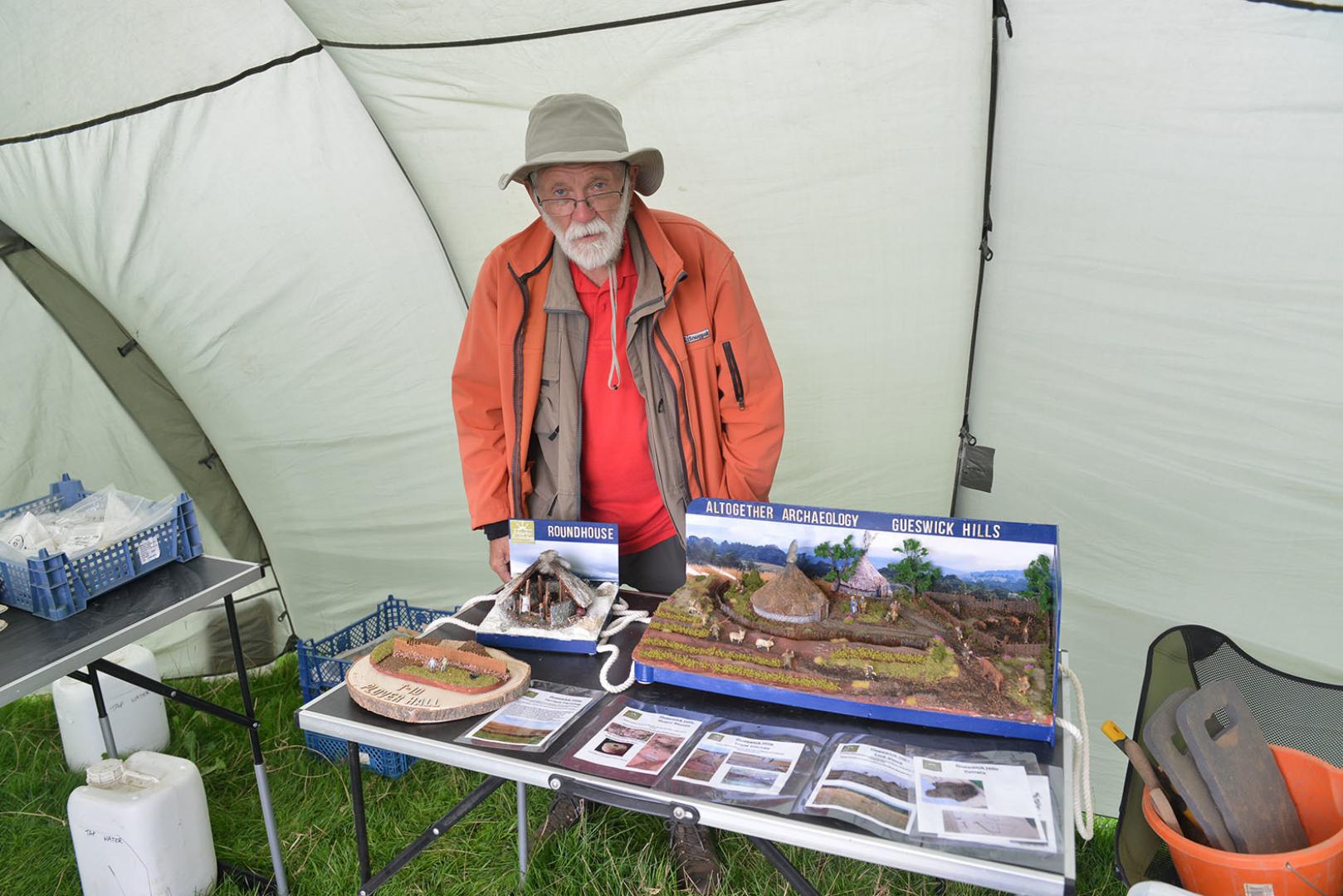ARCHEOLOGISTS are piecing together how an Iron Age settlement near Cotherstone, might have looked like, four years after first investigating the site.
Community group Altogether Archaeology (AA) has been digging at Gueswick Hills each summer since 2019 and for the first time, archaeologists have been able to create a model of the fortified settlement that existed there more about 2,500 years ago.
They have found evidence of people living at the site between 700BC and 78AD, spanning both the Iron Age and Roman times.
AA chairman Tony Metcalfe said among the items uncovered in the latest excavation were four beehive quern stones used for grinding spelt, Roman and Iron Age pottery, glass beads and bangles, and a Roman spearhead.
One shard of pottery is from a mortarium bowl.
Mr Metcalfe said: “It was made with clay from Catterick – it is like a mortar and pestle and was used to crush herbs and spices.”
Also uncovered from the first century were three pieces of a glass bangle.
Another intriguing find is a large rock with a crack down the middle which is thought to have been caused by the heat of a fire above it.
Mr Metcalfe said: “One of our research students from Durham University is going to bring a piece of equipment up that will examine the stone and tell us what heat it went to, so we will know if it was a domestic fire or a furnace of some sort.”
Once the testing is completed, the archaeologists will remove charcoal from within the crack and send it to Queen’s University Belfast for carbon dating, while the pottery shards will be sent away for spectrometry readings.
Likewise, micro-organisms found at the site will be sent for DNA analysis.
The cost of carbon-dating and spectrometry analysis is being covered by a £5,000 grant from North Pennines Area of Outstanding Natural Beauty Partnership’s Tees-Swale Project, as well as £500 each from the Council of British Archaeology North Yorkshire, and the Architectural and Archaeology Society of Northumberland and Durham.
Evidence uncovered so far has enabled AA member Steve Brown, from Carlisle, to create a model of the settlement, which along with the roundhouses, includes a reproduction of the contours of the land and is placed against a photographic backdrop, showing how the site fits into the existing landscape overlooking Eggleston.
The dig has been drawing a lot of interest from community groups as well as interested people nationally and internationally. Mr Metcalfe said: “This morning, I just had the Gainford History Group come up and this afternoon we have the Teesdale Record Society coming up.
“We have had the Teesdale U3A history group along as well.
“We have volunteers from all over the country here. We have people from Hull, we’ve had people from Liverpool and Carlisle, and we’ve had two Canadian students here. It is good for the local economy because we have people staying in cottages, pubs, B&Bs and Doe Park Camp site.”
Another success this summer is the completion of a magnetometry survey of the entire site, which has revealed even more anomalies underground.
Mr Metcalfe said: “We have potential sites here for years of work – we have a lot of unanswered questions.”
The dig concluded last Saturday and a report by field lead Dr Martin Green will be produced later in the year.





